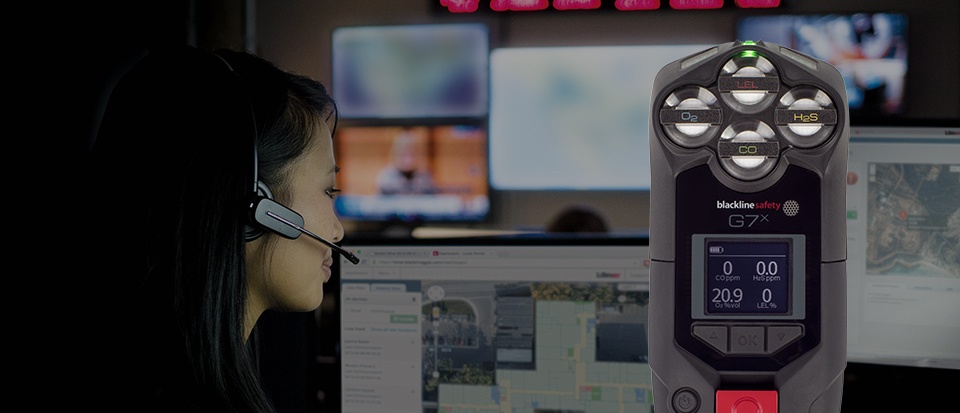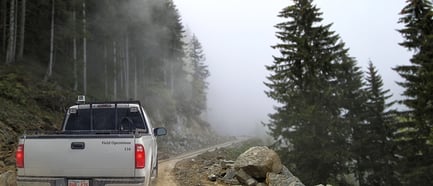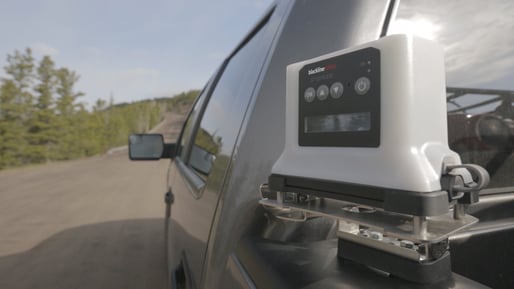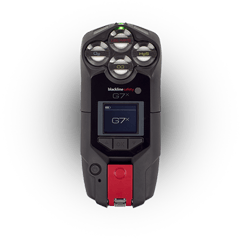Blackline Safety is a technology leader driving innovation in the industrial workforce through IoT (Internet of Things). With connected safety devices and predictive analytics, Blackline enables companies to drive towards zero safety incidents and improved operational performance. Blackline provides wearable devices, personal and area gas monitoring, cloud-connected software and data analytics to meet demanding safety challenges and enhance overall productivity for organizations with coverage in more than 100 countries. Armed with cellular and satellite connectivity, Blackline provides a lifeline to tens of thousands of people, having reported over 200 billion data-points and initiated over seven million emergency alerts. For more information, visit BlacklineSafety.com and connect with us on Facebook, Twitter, LinkedIn and Instagram.
Satellite connectivity keeps worker safe at remote coal mine site in northern Canada
Blackline Safety, Leader in Connected Gas Detection & Lone Worker Safety
February 02, 2023
 Legislation for lone workers in Canada ensures employers adhere to specific safety measures to keep their employees working alone safe. Though provincial regulations may vary, a few common principles apply. This includes implementing an effective system of communication for the specific lone worker situation. According to data from WhistleOut, Canada’s cellular network provides coverage for less than 30% of the country. How can companies ensure their people are consistently connected when working in unconnected regions? Especially if not only the location of their work — but also the nature of their work — carries an array of hazards?
Legislation for lone workers in Canada ensures employers adhere to specific safety measures to keep their employees working alone safe. Though provincial regulations may vary, a few common principles apply. This includes implementing an effective system of communication for the specific lone worker situation. According to data from WhistleOut, Canada’s cellular network provides coverage for less than 30% of the country. How can companies ensure their people are consistently connected when working in unconnected regions? Especially if not only the location of their work — but also the nature of their work — carries an array of hazards?
 Dependable safety monitoring in high-risks situations
Dependable safety monitoring in high-risks situations
That was exactly the challenge faced by a global environmental engineering firm working on a research pilot project for a mining company. The project was at a remote coal mine in northern British Columbia, Canada.
As part of the research work, a staff scientist was required to travel to the coal mine periodically to gather water samples from the tailings pond there. The job had multiple safety risks: the remoteness of the location with no cellular connectivity or radio reception; a confined space entry to gather the samples; and the potential for exposure to hydrogen sulfide (H2S), a lethal toxic gas within the confined space. The existing safety solution was proving inadequate capabilities to address these diverse hazards.
 Two-way communication and real-time visibility – anytime, anywhere
Two-way communication and real-time visibility – anytime, anywhere
The engineering firm trialed Blackline Safety’s G7x wearable personal gas detector. G7x works with G7 Bridge to provide reliable satellite connectivity in remote areas, allowing workers to wirelessly connect to the Blackline Live platform for real-time safety monitoring and emergency alert notifications. Together, they delivered a trustworthy connection that helped the scientist feel safe on her long commute—and while on the job.
“I was driving on a dangerous highway to get to the site, in the middle of winter…I felt safer knowing that since I was on my own, on a long drive with no cell service, my G7x kept me connected to my team back at the office so they would know exactly where I was, and I could use it for emergency notification if needed.”
While working at a remote site, the scientist experienced a gas detection incident. She was wearing the existing solution and had just completed her 2-hour check in before when the device detected carbon monoxide.
"Because I was in the middle of no where with no cell service or radio reception, one of the things that went through my mind when my old gas monitor went off was: no one is going to find me for 2 hours… but now with the Blackline [wearable safety device] on, I knew someone would be immediately notified,” she said. "No one had cell service on site, so having the satellite network is definitely my favorite feature of the Blackline Safety G7x.”
Ensuring remote workers return home safe
Workers in isolated locations face an array of potential hazards, including some that are unexpected.
“I was feeling ill on my drive to site, and stopped to rest…when I got in the truck again with all the safety gear to go to site, I kept getting a carbon monoxide detection from my G7x device when I was in the vehicle. I would stand outside, and it would be fine, but in the vehicle, my device kept going off,” she said.
Carbon monoxide, which has no smell, no taste and no colour, was leaking into the vehicle from the engine, and with the help of the G7x multi-gas detectors, this worker was able to identify she was at risk:
"I would never have known this was what was making me sick if it weren’t for the Blackline G7x device”.
Hydrogen-resistant sensor adds immediate value, saves costs
A further complication of the existing solution was its carbon monoxide sensor was not hydrogen resistant.
“Every time I went in an area where there was the slightest trace of hydrogen the carbon monoxide sensor went off,” she said. “Due to safety protocol, this meant I had to evacuate the area until it was deemed safe to return, which was both time consuming and costly in terms of lost productivity.”
As part of the G7x trial, Blackline Safety’s carbon monoxide: hydrogen-resistant sensor (CO-H) was used in the device, eliminating the hydrogen sensitivity issue.
“If we hadn’t figured this out, there would have been huge gaps in our research data due to me not being able to access the samples.”
 Ready to learn more?
Ready to learn more?
Discover all the features of Blackline Safety’s G7 Personal Gas Detectors to ensure your workers have the confidence to get the job and get home safe, wherever and whenever.
Stay Informed
Receive articles about trends and best practices in the safety industry right in your inbox.
Related Blog Posts
Real-Life Incident: Mason’s Story — High H2S Exposure
November 25, 2025
“Shortness of breath. Request EMS to the location.” How Real-Time Gas Detection Led to a Quick Save Exposure to toxic gases can go from a strange...
Real-Life Incident: Gerry’s Story: Alone in the Boiler Room With CO
October 21, 2025
When a routine patrol became a potential gas poisoning tragedy, quick action and life-saving technology made all the difference. It was a routine...
Real-Life Incident: Brian’s Story - Containing a Texas Brush Fire
August 26, 2025
How quick action stopped a blaze from spreading, safeguarding nearby neighborhoods In a farming community in rural Texas with a population fewer...




